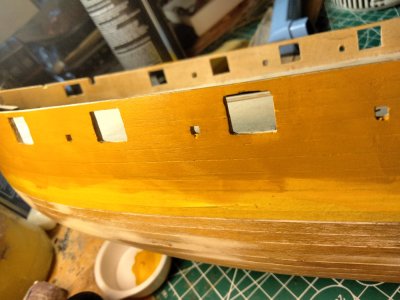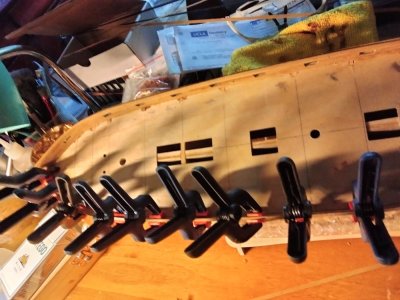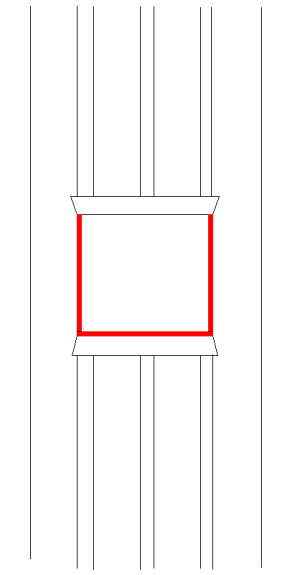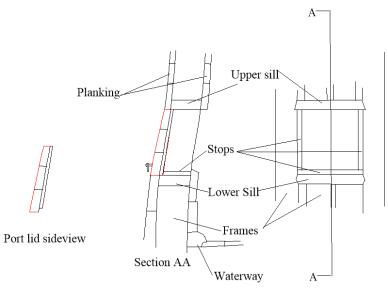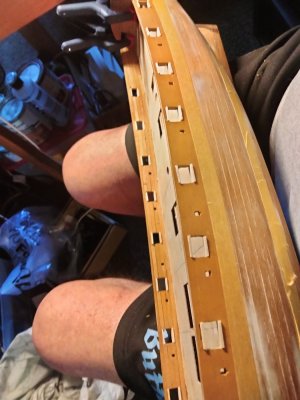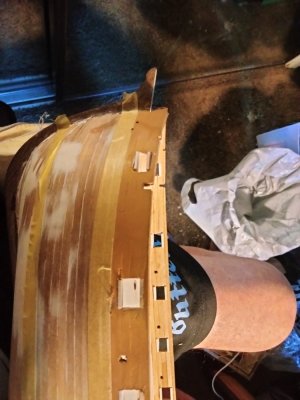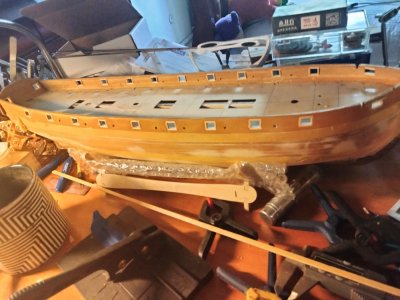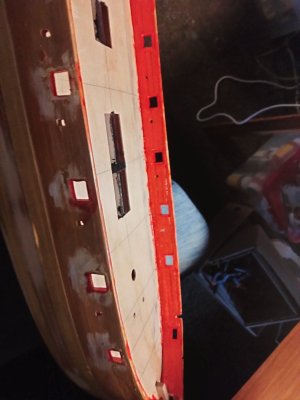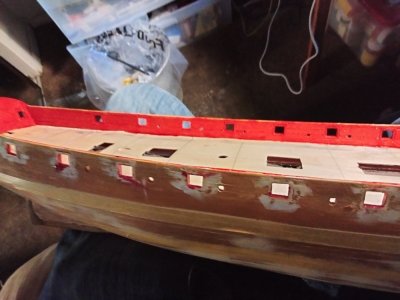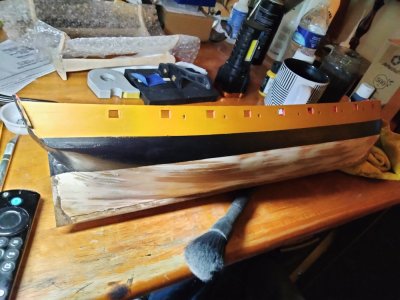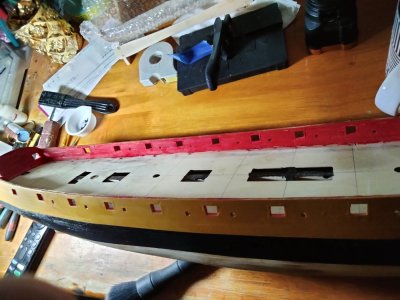Hi Ted
It is a good idea to check information based on contemporary sources to find if something is amiss such as this mistake in the instructions. If only one book can be picked, Goodwin's
The Consruction and Fitting of the English of Men of War is a good choice as it covers a wide range of years. The gun port linings have been discussed in some detail here at SoS, but just in case a search does not turn up everything you need, the following may help. These cover both plank on frame and plank on bulkhead builds.
Allan
There are both sills as well as the stops (linings) as shown below. The stops are shown in red. There were stops on the sides and top of the lower sill but no stops on the bottom of the upper sills. The stops are recessed so the port lids close flush with the surrounding planking
View attachment 512168
For plank on bulkhead there are still sills and stops, but the construction is different to account for the large gap between the bulkheads.
View attachment 512169
The below shows the ports in two layers as was actually done for obvious reasons, but on a small scale model this is often made up with just the outboard layer of planks which ran in line with the adjacent planking on the hull.
View attachment 512170

